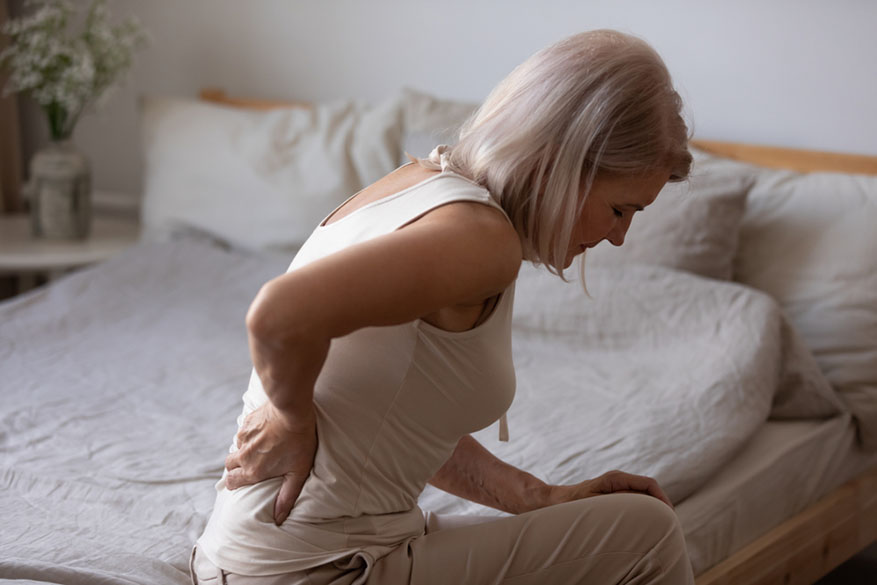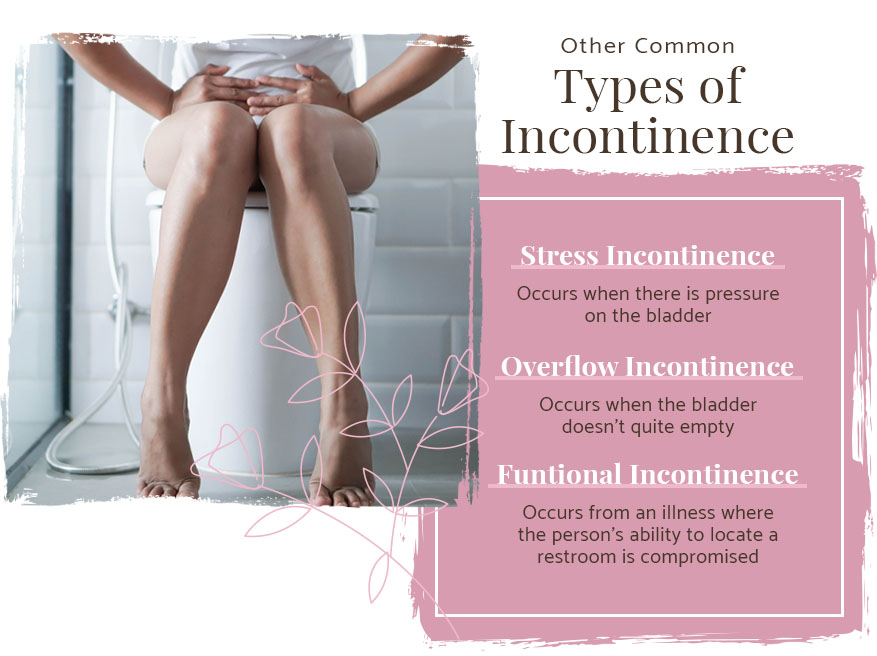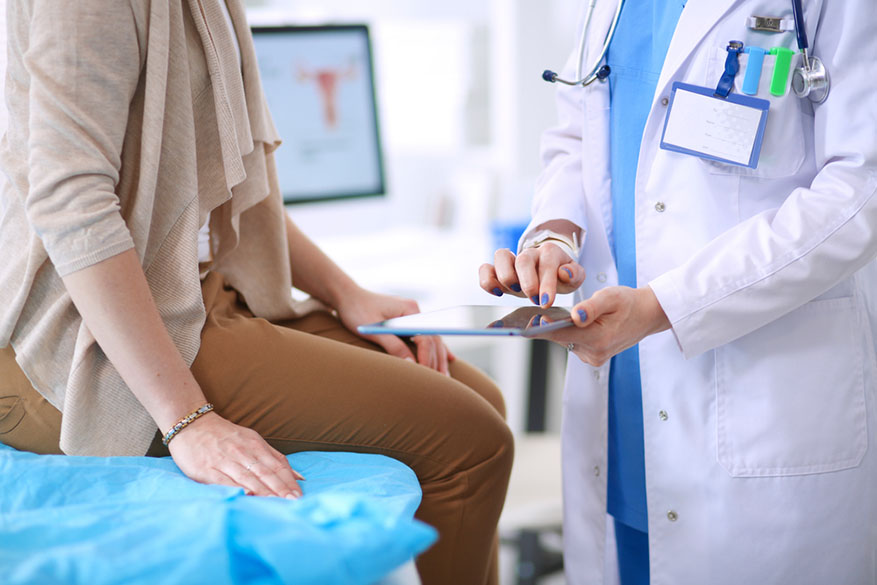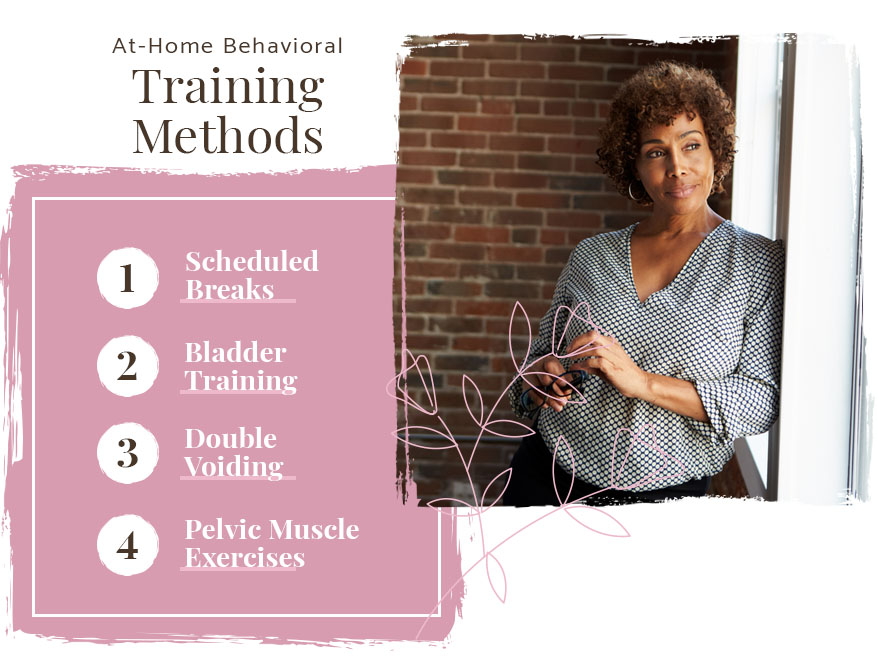
Understanding Reflex Incontinence

Are you leaking large amounts of urine before making it to the bathroom? It could be reflex incontinence. But just what are some of the symptoms of reflex incontinence and how does it differ from a simple leak?
Sofia & Grace wants women of all ages to understand reflex incontinence, its causes and risks, and how to go about diagnosing it with your doctor. And that’s why we do all that and more in this thorough breakdown. Plus, we explore how women can manage leaks using incontinence liners, underwear, and other at-home behavioral training methods and prescription medications if needed. That way, you can get your bladder healthy again and your confident life back on track.
Shop All Incontinence and Bladder Control Products
First, What Is Reflex Incontinence?
Reflex incontinence is a similar condition to an overactive bladder, otherwise more medically known as urge incontinence, but with a few distinct differences.
Urge incontinence occurs when the bladder has an involuntary muscle spasm that creates a sudden urge to urinate and rush to the bathroom. This spasm can happen without a moment’s notice, even when your bladder isn’t full and you haven’t had much to drink. More often than not, this involuntary muscle spasm can cause urine leakage before reaching the toilet.
Reflex incontinence is caused by the very same type of muscle spasm in the bladder. However, the key difference is that it can cause more than a small leak. In fact, it can create a significant leak and with little warning, if any heads up at all.

While reflex incontinence can happen to both men and women, there is one common factor most who experience it have: a neurological impairment. What kind of neurological impairment, you might ask? Below, we uncover some of the causes and risks associated with reflex incontinence and reveal some of the treatment options someone experiencing it can take or perform to improve their quality of life.
Reflex Incontinence: Causes and Risks
As mentioned, the muscle spasms associated with reflex incontinence are quite different from those who experience urge incontinence. Generally speaking, for reflex incontinence, there is an underlying dysfunction in the bladder’s detrusor muscle, causing it to contract and squeeze — sometimes even when there’s nothing to squeeze out! Essentially, it sends a signal — false or not — to your body to urinate. Most times, the false signal and squeeze are caused by neurological impairment, which could have been the result of any number of things from:
- Spinal Cord Injuries
- Multiple Sclerosis (MS)
- Radiation Treatments
- Surgical Damage
- Parkinson’s Disease
- Alzheimer’s and Dementia
- Stroke
How Reflex Incontinence Compares to Other Conditions
Did you know there are different types of urinary incontinence? If you’re unsure whether your symptoms of incontinence are related to a neurological impairment or disorder caused by an injury, here is a breakdown of each type of urinary incontinence so that you can compare.

Stress Incontinence
Stress incontinence occurs when there is pressure on the bladder. This can be caused by actions as simple as coughing or sneezing. It can even be caused by hard laughter or physical activity. When you have a combination of symptoms that seem to fall somewhere between stress incontinence and reflex incontinence, it is known as mixed incontinence.
Overflow Incontinence
Overflow incontinence occurs when the bladder doesn’t get quite entirely empty. This means that even after you think you’re all done, flush, wash your hands, and leave the restroom, you still might have some urine leakage. In men, this is what’s known as an after-dribble.
Functional Incontinence
Functional incontinence typically occurs from a disability or illness where the person’s ability to locate a restroom is compromised. In other words, the person might recognize they have to urinate, but are usually too late to the restroom. One example of when this occurs is with those who have dementia. For instance, dementia can leave one with cognitive issues where they cannot distinguish what the sensation in their bladder is and the steps they need to take to reach a restroom.
How to Diagnose Reflex Incontinence
If you experience any symptoms of reflex incontinence or perhaps have mixed incontinence symptoms, it’s important to see your doctor. A reputable doctor can help you determine the cause for your incontinence issues and steer you toward the right treatments so you can continue your life without needing to plan your day around bathroom breaks.
Experiencing back pain and incontinence can point to something more troubling. For instance, it could be a sign of a rare disease known as cauda equina syndrome (CES) or other conditions like kidney stones, a burst artery wall in the abdomen or a spinal cord injury. So, if you feel back pain along with one of the four types of incontinence, make an appointment with your doctor.
Back Pain and Incontinence: Understanding the Connection
To help diagnose your incontinence, keep a diary of your symptoms and bathroom habits. Make a note of leaks and accidents, no matter how insignificant or embarrassing, and jot down your daily total of fluid intake. Keep this record for at least a week or so before your doctor’s appointment. These details can help them make a more precise observation that can point to a more concrete diagnosis.
What to Expect
At your doctor’s appointment or urologist, you will undergo a full physical examination. In addition to hearing your symptoms, your doctor will also need to understand your medical history to help determine the necessary diagnostic tests. For example, some further diagnostic tests might include the following:

Urinalysis/Urine Culture — You will need to provide a urine sample for a standard urine test, so drink up. Also, if the test comes back with signs of an infection, the urine will be sent to a lab that can detect bacteria from a urine culture. A urine culture can indicate something like urinary tract infections and more.
Cough Stress Test — A simple test, your doctor will ask you to drink water at the start of your appointment or before arriving so you can fill and expand your bladder. Then, asking you to cough to see if there is leakage, etc., they will be able to determine what kind of incontinence you are experiencing and diagnose the type.
Pelvic Floor Assessment — By taking an assessment of your pelvic floor, your doctor can see how well your muscles can contract and relax, thereby determining their strength. They might put you on some Kegel exercises to improve these internal muscles, depending on what they find.
Pelvic Exam — Women will need to have a pelvic exam, which can help determine if there is a pelvic organ prolapse or relaxation.
Blood Test — A blood test will evaluate your kidney’s overall function. A blood test will also find any chemical imbalances that can be causing incontinence, especially those due to neurological impairments and disorders. In addition, for men experiencing reflex incontinence, it can help identify prostate antigen levels.
Post-Void Residual Urine Assessment — This assessment helps measure the amount of urine remaining 15 minutes after going to the restroom. Taking the post-void residual assessment can rule out or determine if you have certain kinds of incontinence issues like overflow incontinence. The urine sample can also discover if you have infections, crystallites, sugar, or blood in your urine.
Urodynamic Testing — This test essentially measures the physical attributes of your bladder, from the flow to the capacity and the overall function. Within urodynamic testing are additional different tests, such as a cystometrogram, urethral pressure profile, uroflowmetry, stress testing, and pressure voiding study.
Cystoscopy (Post-Prostatectomy) — A cystoscopy test is used to determine if the bladder’s neck is contracted. Only a bit invasive, it requires a physician to insert a small camera up into the bladder to take a peek around and see what may be going on.
Treatment Options for Reflex Incontinence
Treatment options for reflex incontinence can vary, depending on the type and severity of symptoms your doctor finds. Treatments can be one or several of the following options, from at-home behavioral training to medications and medical devices.
At-Home Behavioral Training Methods
Below are some behavioral training methods you can perform in the comfort of your home bathroom. Try a few and see what works for you:

Scheduled Breaks — Retrain your bladder by setting scheduled bathroom breaks. By avoiding the restroom until your clock says so, it can retrain your bladder to become more regular, minimizing reflex incontinence. The trick is to start with smaller intervals first, strengthening your muscles and more, and then slowly and gradually extending the intervals so you can improve holding your urine longer.
Bladder Training — Bladder training is essentially a method in which you use a combination of distractions and deep breathing to teach your bladder a little restraint. By practicing these techniques, you can learn to suppress the urgent need to tamper down overactive nerve signals.
Learn More About Bladder Training Here
Double Voiding — This at-home behavior training method asks you to play a wait-and-see game with your bladder. Once you empty it the first time, make sure your bladder isn’t holding anything back and try to empty it again after a few minutes have passed.
Kegels/Pelvic Muscle Exercises — Last, but not least, are pelvic muscle exercises. Ideally, these Kegel exercises should be used in conjunction with many of the methods mentioned above. Since your pelvic floor supports the uterus, it can help strengthen the muscles, allowing you to hold your bladder longer and prevent leaks. In addition, by creating regular muscular contraction exercises, your pelvic floor muscles can be vastly improved.
Incontinence Products
In addition to practicing these at-home behavioral training exercises, you can try different kinds of incontinence products. Here are just a few suggestions:
Absorbent Products — Pants, pads, and other adult undergarments are easy to find. You can simply pick them up at the store. But at Sofia & Grace, you can shop discreetly online, having incontinence products for women delivered in a discreet box straight to your door.
Patches and Plugs — You can find devices like patches and plugs that can be inserted into the vagina to prevent leakage. Often, women use these during vigorous exercise.

Prescription Medications
If symptoms are severe enough, there are several prescription medications your doctor can prescribe, such as anticholinergics and antimuscarinics, as well as agonists, antidepressants, and even topical estrogens for women.
Anticholinergics and Antimuscarinics — These types of medications are able to relax the muscles around your bladder, thereby reducing bladder spasms that can cause leaks and incontinence issues. Some examples of common anticholinergics and antimuscarinics are:
- Oxybutynin (Brand: Oxytrol)
- Tolterodine (Brand: Detrol)
- Darifenacin (Brand: Enablex)
- Trospium (Brand: Sanctura)
- Solifenacin (Brand: VESIcare)
Beta-3 Agonists — Some beta-3 agonists like Mirabegron (Brand: Myrbetriq) have been discovered to help suppress involuntary contractions in the bladder.
Tricyclic Antidepressants — These types of antidepressants are designed to treat depression, first and foremost. However, some tricyclic antidepressants, like imipramine hydrochloride (Brand: Tofranil) and amitriptyline hydrochloride (Brand: Elavil), have been found as an effective bladder muscle relaxant in some individuals.
Topical Estrogen — A treatment alternative for women is conjugated estrogen (Brand: Premarin) used as a topical estrogen cream applied around and inside the vaginal region. Topical estrogen works to tone the muscles and strength of the urethra and pelvic floor.
Experiencing Reflex Incontinence? Find What Works for You

Should your doctor determine and diagnose you with reflex incontinence — or any type of incontinence, for that matter — find the treatments and solutions that work for you. What works for one woman isn’t for the next.
As a start, try our discreet incontinence products like liners and explore our tips and how-tos on mastering your daily Kegel routine. Just remember: At the end of the day, do what feels right and makes you gain back your total confidence.
Image Credits
MRAORAOR/Shutterstock.com
Klahan/Shutterstock.com
Super8/Shutterstock.com
Studio Romantic/Shutterstock.com
fizkes/Shutterstock.com
alanadesign/Shutterstock.com
Monkey Business Images/Shutterstock.com
insta_photos/Shutterstock.com
S_L/Shutterstock.com
pixelheadphoto digitalskillet/Shutterstock.com